A dishwasher is meant to clean your dishes and not itself, but since it can heat up to a level where dishwasher salmon has become a thing (if you don’t believe us check it for yourself), you’re not to blame for thinking that you don’t have to wash it and its parts.
Here, we’ll go through all of the best ways to clean a dishwasher and explain exactly what and why to do it.
IN THIS ARTICLE:
Why Should I Clean My Dishwasher?
A dirty dishwasher can’t efficiently clean utensils, pots, plates, and glasses (or cook salmon if that’s what you’re into). If you’re disgusted now, just imagine how much dirt gets on when the machine gathers all the built-up gunk and residue to ‘’clean the dishes’’. By cleaning it regularly, you maximize its cleaning efficiency. You’ll also postpone the costly maintenance that has to be done by a professional


Supplies Needed For Dishwasher Cleaning
Different methods of cleaning require different cleaning supplies. You can choose to use one but it would be optimal to clean it using more than one method for the best results.
Cleaning With Chemicals
- Bleach
- Stainless Steel Cleaning Sprays
- Dish soap
- Commercial Dishwasher Cleaners (liquids, tablets, conditioners)
Eco-Friendly Cleaning
- Vinegar – cleaner and disinfectant
- Baking Soda – freshener and stain remover
- Rubbing Alcohol – cleaner, disinfectant
- Lemon Wedges – stain remover
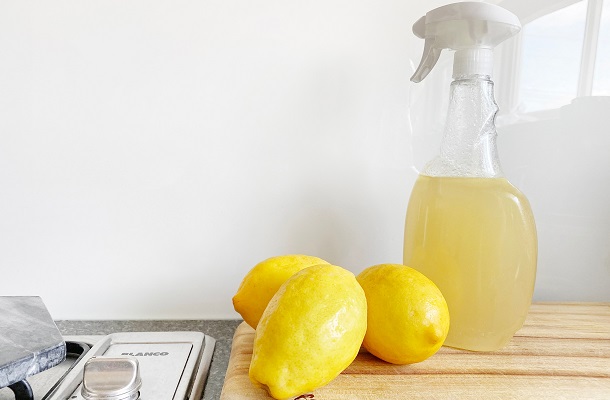

Cleaning With Vinegar
You can soak the filter, racks, and other removable parts in a vinegar and water mixture. We suggest a 1:1 ratio. For cleaning the inside with vinegar using a full cycle, you can use 1 one cup of vinegar.
Baking Soda Magic
Baking soda is an excellent, commonly available cleaner. It can get rid of nasty smells and give your dishwasher a fresh shiny look. All you have to do is sprinkle a cup on the bottom and run a cleaning cycle.
Important Note: Never combine vinegar and bleach. The chemicals and fumes released after the two get in contact are extremely hazardous.
Self Cleaning Cycle
Newer dishwashers come with a self-cleaning cycle. Although we don’t trust it fully, we still recommend you use it. It will run with a water temperature higher than regular (typically around 148 degrees F) to clean itself.
What Requires Cleaning? Cleaning Methods, And How To Perform
Parts And Their Functions
Filters – Every bit of food, grease, and dirt that gets washed off of your plates, forks, and other utensils ends up on the filter beneath the lower rack. It prevents the food from reentering the dishwasher and prevents your drain from clogging.
Spray arms – Those helicopter or alien-looking things that spin in a circular motion located below the racks of the dishwasher are the spray arms. They have tiny holes in them that spray clean high-pressure water.


Pipes – Introduce water to the dishwasher. Commonly, dishwashers also have a waste pipe. They’re located outside of the dishwasher in the back.
Dispensers – There are two types of dispensers, one is the detergent and the other one is a rinse aid dispenser if your washer has one. They’re located on the inside of the door.
Racks And Utensils Basket – This is where you’ll put dishes. Machines usually have 2 but some have 3 racks. They’re usually made out of some sort of plastic or metal. The utensil baskets are smaller and get put on the racks in their designated areas or anywhere you’d prefer.
Door Gasket – It’s a rubber seal located on the outer edges of the washer’s door. They prevent water from exiting the machine and they tend to get moldy before anything.
Maintenance Of Each Part
To keep your dishwasher looking nice and working properly all year round, you should perform regular maintenance. Depending on the part, they should be cleaned once a month, weekly, or when needed
Filter Maintenance
- Every second wash or at least once a week, take out the filter as you would usually
- Rinse it under warm water to get rid of some debris accumulated in it
- Carefully place it back and lock it in its place
Cleaning The Dispensers
- Take a toothpick and clean out oily residue in the crevices of the dispenser
- Run the machine on a self-clean cycle with the detergent and rinse aid dispensers open – should be cleaned before running the self-clean cycle as both are important for proper functioning
- Refill the rinse aid dispenser regularly as it largely helps with drying dishes
Cleaning The Racks And Utensil Baskets
- Take out of the machine and scrub with a toothbrush using mild dish soap – utensil baskets are more problematic and get dirty more easily
- Rinse and place back
- If there’s rock-solid debris on, you can soak it in vinegar and warm water mixture
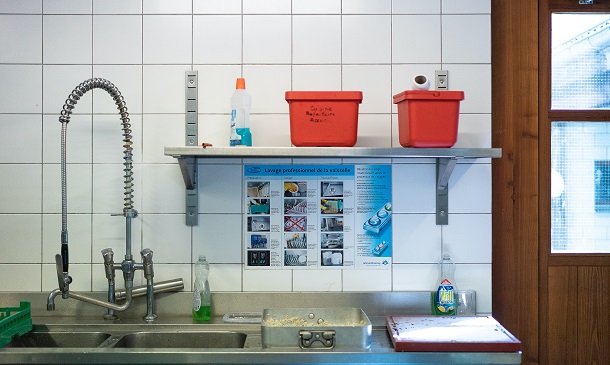

Cleaning The Door Gasket
- Wipe the rubber seals with a microfiber cloth that’s been diluted in white vinegar or dishwashing soap – the problem is that mold builds up easily there with moisture that’s sealed in there
- Leave open to dry
Cleaning The Control Panel
- Wipe down with a microfiber cloth dipped in mild dish soap
- You don’t even have to use dish soap as long as you get rid of the finger stains and other dirt that might have found its way there
Tip: Don’t use anything too abrasive, especially if you have a touch screen panel as it can get damaged
Deep Cleaning
Deep cleaning stands for cleaning hard-to-reach areas of a dishwasher. These areas should be cleaned at least every 3 months either with a toothbrush, toothpick, or both. It includes cleaning out the following:
Clogged Dishwasher Filter
- Locate the filter. It’s found on the bottom of the machine and turn it gently to remove it (Remember – Lefty loosey, righty tighty)
- Rinse it in the sink with warm water. – It makes cleaning the dirt and debris more efficient, especially grease particles.
- Use a soft bristle brush and mild dish soap to scrub the food debris. – Do it gently to not ruin the filter
- Use a toothpick to get into the tiny holes of the filter if needed
- Rinse and place the filter back where it belongs
Tip: Lock the filter safely back into place as incorrect placement can cause the dishwater to break.


Spray Arms Cleaning
- The spray arms are located on the bottom near the filter. Gently tug them upwards to separate them
- Take a toothpick and pry into the holes where the water usually sprays.
- Alternatively, you can soak them in white vinegar and soapy warm water mixture for hard to reach and clean areas
- Rinse and repeat if needed, and place them back into the dishwasher
Pipes Cleaning
- Run the dishwasher on its hottest cycle while it’s empty – this will get rid of the mineral, grease, gunk, and debris build-up in the pipes that might otherwise clog your drain
- Alternatively, place a bowl of vinegar on the bottom or use a commercial cleaner and repeat step one – These steps will only postpone the inevitable maintenance that’s required
When To Call A Professional?
You don’t have to call for a professional to perform regular maintenance but you can call them to arrange a maintenance session to see if everything is in order and is functioning properly.
Repair Prices
Average repair costs for dishwashers will require you to spend $100-360 dollars. At hourly rates, it’ll cost anywhere between $100-$200. A lot can go wrong with a dishwasher but manufacturers usually predict a lifespan of 10 years.
Can You Repair a Broken Dishwasher?
Although you can avoid having your dishwasher break by cleaning it regularly, even then, the help of a professional will sometimes be needed. Keep in mind that a dishwasher is meant to be used and will work better if used regularly, but there are things you can’t avoid. Some parts you can replace yourself, but others require a professional.
Pump
Pumps can’t be reached by an average joe unless you know what you’re doing. Gunk, grease, and mineral deposits can all accumulate in the pump even when you perform regular deep cleaning. It will clog your drain and may lead to a flood in your kitchen.
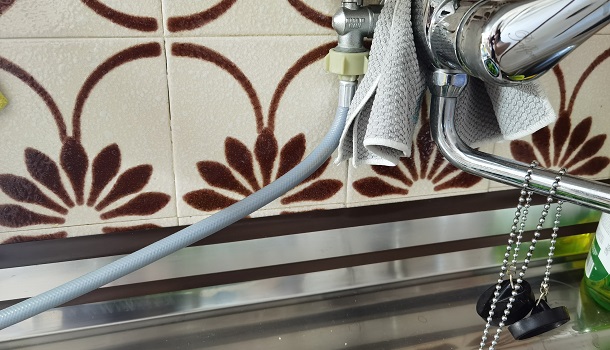

Filter
Filters will have to be replaced eventually but regular cleaning should expand their lifetime. You can remove the filter on your own and replace it so the only real cost will be the actual filter. Tip: Never run your dishwasher without a filter present
Fix Moldy Dishwasher
Cleaning everything listed above (especially the interior and door gasket) should keep smells and mold build-up in check. If that’s not the case, do the following:
- Take vinegar and a dishwasher safe bowl
- Fill it with one cup of vinegar and run it for a full cycle on the hottest setting
- If that doesn’t help, do the same with bleach. Remember: Do not use bleach on dishwashers with a stainless steel interior or parts as these two do not go well together and stainless steel will get damaged and permanently stain
- Run another cycle with vinegar if you can’t use bleach and you still haven’t gotten rid of the mold
To Wrap It Up
A dishwasher can be cleaned in multiple ways, it’s just a matter of figuring out what suits you best and which cleaning supplies you have on hand. It’s easier than you think and with a few measures of precaution like locking the filter safely into place and being careful of washing stainless steel washers, you’re setting yourself up for success in terms of your dishwasher’s lifespan.

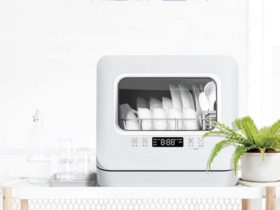











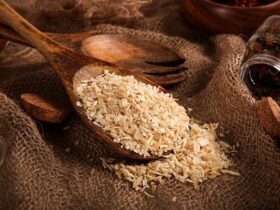




Leave a Reply